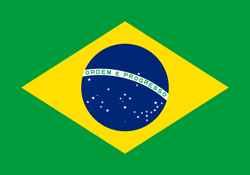IPPOG Forum Members
IPPOG
IPPOG Forum Members
France

Intro
In France, introducing young people and the general public to basic science (nuclear physics, physics of elementary particles, cosmology and astrophysics), the technological advances they require and their related applications (energy, health, etc.), is a key mission for the 25 CNRS/IN2P3 national research laboratories and platforms, and the CEA/IRFU. Our educational and outreach activities are carried out in close collaboration to teaching staff and take many forms: visit to laboratories, “Masterclass” discovery days, teacher-training courses, loans of cosmic-ray detectors for use in classrooms, teaching aids, exhibitions, websites, virtual visits, audiovisual productions, books, etc.
Our goal: to give people a taste for science and physics
Details
JOINED: 2016
CURRENT STATUS: MEMBER
LOCAL RESOURCES WEBSITE(S)
CNRS/IN2P3 Outreach and Communication Page
En France, la diffusion vers les jeunes (élèves ou étudiants) et le grand public de branches de la recherche fondamentale (physique nucléaire, physique des particules, cosmologie et astrophysique), des avancées technologiques qu’elles nécessitent et de leurs applications sociétales (dans le domaine de l’énergie, de la santé, etc.) est une mission clef des 25 laboratoires de recherche et plateformes nationaux du CNRS/IN2P3 et du CEA/IRFU. Nos activités pédagogiques et de vulgarisation se déroulent en partenariat avec les enseignants et prennent des formes très différentes : visites de laboratoire, journées de découverte « Masterclasses », formations d’enseignants, prêts de détecteurs pédagogiques de muons cosmiques utilisés en classe, supports d’enseignements, expositions, sites internet, visites virtuels, production de contenus audio-visuels, livres, etc.
Notre but : donner aux gens le goût de la science et de la physique
JOINED: 2016
CURRENT STATUS: MEMBER
Representative
Justine Serrano
IPPOG
IPPOG Forum Members
France

Intro
In France, introducing young people and the general public to basic science (nuclear physics, physics of elementary particles, cosmology and astrophysics), the technological advances they require and their related applications (energy, health, etc.), is a key mission for the 25 CNRS/IN2P3 national research laboratories and platforms, and the CEA/IRFU. Our educational and outreach activities are carried out in close collaboration to teaching staff and take many forms: visit to laboratories, “Masterclass” discovery days, teacher-training courses, loans of cosmic-ray detectors for use in classrooms, teaching aids, exhibitions, websites, virtual visits, audiovisual productions, books, etc.
Our goal: to give people a taste for science and physics
Details
JOINED: 2016
CURRENT STATUS: MEMBER
LOCAL RESOURCES WEBSITE(S)
CNRS/IN2P3 Outreach and Communication Page
En France, la diffusion vers les jeunes (élèves ou étudiants) et le grand public de branches de la recherche fondamentale (physique nucléaire, physique des particules, cosmologie et astrophysique), des avancées technologiques qu’elles nécessitent et de leurs applications sociétales (dans le domaine de l’énergie, de la santé, etc.) est une mission clef des 25 laboratoires de recherche et plateformes nationaux du CNRS/IN2P3 et du CEA/IRFU. Nos activités pédagogiques et de vulgarisation se déroulent en partenariat avec les enseignants et prennent des formes très différentes : visites de laboratoire, journées de découverte « Masterclasses », formations d’enseignants, prêts de détecteurs pédagogiques de muons cosmiques utilisés en classe, supports d’enseignements, expositions, sites internet, visites virtuels, production de contenus audio-visuels, livres, etc.
Notre but : donner aux gens le goût de la science et de la physique
JOINED: 2016
CURRENT STATUS: MEMBER
Representative
Olivier Dadoun
IPPOG
IPPOG Forum Members
Italy

Intro
The Italian research agency dedicated to the study of the fundamental constituents of matter and the laws that govern them, under the supervision of the Ministry of Education, Universities and Research (MIUR), is the Italian National Institute for Nuclear Physics (INFN). It conducts theoretical and experimental research in the fields of subnuclear, nuclear and astroparticle physics. Groups from the Universities of Rome, Padua, Turin, and Milan founded the INFN on 8thAugust 1951 to uphold and develop the scientific tradition established during the 1930s by Enrico Fermi and his school, with their theoretical and experimental research in nuclear physics. In the latter half of the 1950s, INFN designed and built the first Italian accelerator, the electron synchrotron developed in Frascati, where its first national laboratory was set up. During the same period, INFN began to participate in research into the construction and use of ever-more powerful accelerators being conducted by CERN, in Geneva. Today INFN employs some 6000 scientists whose work is recognized internationally not only for their contribution to various European laboratories, but also to numerous research centres worldwide. All of INFN’s research activities are undertaken within a framework of international competition, in close collaboration with Italian universities on the basis of solid academic partnerships spanning decades.
As an Institution working on cutting-edge scientific issues, INFN has a significant impact on the progress of knowledge, on technological development and on the economy of the country. Aware of this role, and of the fact that it is the duty of a public body to share its activities and the results that derive from them with society, the Institute is increasingly committed to outreach and public engagement. The Institute plays an important role in the communication of physics at the national and local level, by promoting, designing and implementing initiatives for the dissemination and promotion of scientific culture, both for the general public and for specific targets. In addition to traditional initiatives, it studies and experiments new forms of communication, emphasizing the fundamental relationship between physics and other areas of knowledge. The Institute also contributes a lot to the training of high school students through scholarships, internships, teacher training and school-work projects.
Details
In Italia IPPOG è rappresentato dall’Istituto Nazionale di Fisica Nucleare (INFN). L’INFN è l’ente pubblico nazionale di ricerca, vigilato dal Ministero dell’Istruzione, dell’Università e della Ricerca (MIUR), dedicato allo studio dei costituenti fondamentali della materia e delle leggi che li governano. Svolge attività di ricerca, teorica e sperimentale, nei campi della fisica subnucleare, nucleare e astroparticellare. Le attività di ricerca dell’INFN si svolgono tutte in un ambito di competizione internazionale e in stretta collaborazione con il mondo universitario italiano, sulla base di consolidati e pluridecennali rapporti. La ricerca fondamentale in questi settori richiede l’uso di tecnologie e strumenti di ricerca d’avanguardia, che l’INFN sviluppa sia nei propri laboratori sia in collaborazione con il mondo dell’industria.
L’INFN è stato istituito l’8 agosto 1951 da gruppi delle Università di Roma, Padova, Torino e Milano al fine di proseguire e sviluppare la tradizione scientifica iniziata negli anni ‘30 con le ricerche teoriche e sperimentali di fisica nucleare di Enrico Fermi e della sua scuola. Nella seconda metà degli anni ’50, l’INFN ha progettato e costruito il primo acceleratore italiano, l’elettrosincrotrone realizzato a Frascati dove è nato anche il primo Laboratorio Nazionale dell’Istituto. Nello stesso periodo è iniziata la partecipazione dell’INFN alle attività di ricerca del CERN, il Centro europeo di ricerche nucleari di Ginevra, per la costruzione e l’utilizzo di macchine acceleratrici sempre più potenti. Oggi l’ente conta circa 6000 scienziati il cui contributo è riconosciuto internazionalmente non solo nei vari laboratori europei, ma in numerosi centri di ricerca mondiali.
JOINED: 2007
CURRENT STATUS: MEMBER
JOINED: 2017
Representative
Alessia Giampaoli
IPPOG
IPPOG Forum Members
Brazil

Intro
Brazil is represented in IPPOG by the National Network of High Energy Physics (Rede Nacional de Física de Altas Energias, RENAFAE, in Portuguese), officially created by the Brazilian Ministry of Science and Technology to coordinate the national effort in High Energy Physics. The country has a long tradition in High Energy Physics and its outreach. The event Masterclasses Hands On Particle Physics is applied in the country since 2008 and nowadays more than a 1000 students are reached every year in different institutions spread around the country. By the time Brazil was joining IPPOG, a Working Group was created congregating Particle Physicists and Science Education Experts from different Brazilian institutions around the country to promote particle physics outreach activities and to represent the country in IPPOG. Several initiatives are been developed by this group as the organization of regular meetings to exchange ideas and start new collaborations among the participants. For instance, a project to introduce cosmic ray detectors in elementary schools was born from this group. Given the size and demands of the country, uncountable initiatives and activities can still be created to promote particle physics and scientific knowledge in Brazil.
IPPOG Brazilian website: http://www1.fisica.org.br/ippog/
Details
O Brasil é representado no IPPOG pela Rede Nacional de Física de Altas Energias (RENAFAE), oficialmente criada pelo Ministério da Ciência e Tecnologia do Brasil para coordenar o esforço nacional em Física de Altas Energias. O país tem uma longa tradição em Física de Altas Energias e sua divulgação. O evento Masterclasses Hands On Particle Physics é aplicado no país desde 2008 e hoje mais de 1000 alunos participam do evento a cada ano em diferentes instituições espalhadas pelo país. Quando o Brasil estava ingressando no IPPOG, foi criado um Grupo de Trabalho reunindo Físicos de Partículas e Especialistas em Educação Científica de diferentes instituições brasileiras de todo o país para promover atividades de divulgação da física de partículas e representar o país no IPPOG. Várias iniciativas são desenvolvidas por este grupo como a organização de reuniões regulares para troca de ideias e para iniciar novas colaborações entre os participantes. Por exemplo, um projeto para introduzir detectores de raios cósmicos nas escolas primárias nasceu deste grupo. Dadas as dimensões e as demandas do país, inúmeras iniciativas e atividades ainda podem ser criadas para promover a física de partículas e o conhecimento científico no Brasil.
IPPOG Brazilian website: http://www1.fisica.org.br/ippog/
JOINED: 2016
CURRENT STATUS: MEMBER
Representative
Fernando Gonçalves Gardim
IPPOG
IPPOG Forum Members
ALICE Collaboration
Intro
ALICE is a heavy-ion experiment, designed to study the collisions of nuclei at the ultra-relativistic energies provided by the LHC. The aim is to study the physics of strongly interacting matter at the highest energy densities reached so far in the laboratory. In such conditions, an extreme phase of matter - called the quark-gluon plasma - is formed. Our universe is thought to have been in such a primordial state for the first few millionths of a second after the Big Bang, before quarks and gluons were bound together to form protons and neutrons. Recreating this primordial state of matter in the laboratory and understanding how it evolves will allow us to shed light on questions about how matter is organized and the mechanisms that confine quarks and gluons.
Details
Representative
Simone Ragoni
IPPOG
IPPOG Forum Members
ALICE Collaboration
Intro
ALICE is a heavy-ion experiment, designed to study the collisions of nuclei at the ultra-relativistic energies provided by the LHC. The aim is to study the physics of strongly interacting matter at the highest energy densities reached so far in the laboratory. In such conditions, an extreme phase of matter - called the quark-gluon plasma - is formed. Our universe is thought to have been in such a primordial state for the first few millionths of a second after the Big Bang, before quarks and gluons were bound together to form protons and neutrons. Recreating this primordial state of matter in the laboratory and understanding how it evolves will allow us to shed light on questions about how matter is organized and the mechanisms that confine quarks and gluons.
Details
Representative
Tapan Nayak
IPPOG
IPPOG Forum Members
Italy

Intro
The Italian research agency dedicated to the study of the fundamental constituents of matter and the laws that govern them, under the supervision of the Ministry of Education, Universities and Research (MIUR), is the Italian National Institute for Nuclear Physics (INFN). It conducts theoretical and experimental research in the fields of subnuclear, nuclear and astroparticle physics. Groups from the Universities of Rome, Padua, Turin, and Milan founded the INFN on 8thAugust 1951 to uphold and develop the scientific tradition established during the 1930s by Enrico Fermi and his school, with their theoretical and experimental research in nuclear physics. In the latter half of the 1950s, INFN designed and built the first Italian accelerator, the electron synchrotron developed in Frascati, where its first national laboratory was set up. During the same period, INFN began to participate in research into the construction and use of ever-more powerful accelerators being conducted by CERN, in Geneva. Today INFN employs some 6000 scientists whose work is recognized internationally not only for their contribution to various European laboratories, but also to numerous research centres worldwide. All of INFN’s research activities are undertaken within a framework of international competition, in close collaboration with Italian universities on the basis of solid academic partnerships spanning decades.
As an Institution working on cutting-edge scientific issues, INFN has a significant impact on the progress of knowledge, on technological development and on the economy of the country. Aware of this role, and of the fact that it is the duty of a public body to share its activities and the results that derive from them with society, the Institute is increasingly committed to outreach and public engagement. The Institute plays an important role in the communication of physics at the national and local level, by promoting, designing and implementing initiatives for the dissemination and promotion of scientific culture, both for the general public and for specific targets. In addition to traditional initiatives, it studies and experiments new forms of communication, emphasizing the fundamental relationship between physics and other areas of knowledge. The Institute also contributes a lot to the training of high school students through scholarships, internships, teacher training and school-work projects.
Details
In Italia IPPOG è rappresentato dall’Istituto Nazionale di Fisica Nucleare (INFN). L’INFN è l’ente pubblico nazionale di ricerca, vigilato dal Ministero dell’Istruzione, dell’Università e della Ricerca (MIUR), dedicato allo studio dei costituenti fondamentali della materia e delle leggi che li governano. Svolge attività di ricerca, teorica e sperimentale, nei campi della fisica subnucleare, nucleare e astroparticellare. Le attività di ricerca dell’INFN si svolgono tutte in un ambito di competizione internazionale e in stretta collaborazione con il mondo universitario italiano, sulla base di consolidati e pluridecennali rapporti. La ricerca fondamentale in questi settori richiede l’uso di tecnologie e strumenti di ricerca d’avanguardia, che l’INFN sviluppa sia nei propri laboratori sia in collaborazione con il mondo dell’industria.
L’INFN è stato istituito l’8 agosto 1951 da gruppi delle Università di Roma, Padova, Torino e Milano al fine di proseguire e sviluppare la tradizione scientifica iniziata negli anni ‘30 con le ricerche teoriche e sperimentali di fisica nucleare di Enrico Fermi e della sua scuola. Nella seconda metà degli anni ’50, l’INFN ha progettato e costruito il primo acceleratore italiano, l’elettrosincrotrone realizzato a Frascati dove è nato anche il primo Laboratorio Nazionale dell’Istituto. Nello stesso periodo è iniziata la partecipazione dell’INFN alle attività di ricerca del CERN, il Centro europeo di ricerche nucleari di Ginevra, per la costruzione e l’utilizzo di macchine acceleratrici sempre più potenti. Oggi l’ente conta circa 6000 scienziati il cui contributo è riconosciuto internazionalmente non solo nei vari laboratori europei, ma in numerosi centri di ricerca mondiali.
JOINED: 2007
CURRENT STATUS: MEMBER
JOINED: 2017
Representative
Sabine Hemmer
IPPOG
IPPOG Forum Members
United States of America

Intro
QuarkNet and Fermilab are the leading institutions for United States particle physics outreach.
Both institutions had an exciting 2020, transitioning quickly to virtual offerings and expanding particle physics education and outreach to new audiences.
In addition to offering remote workshops at centers across the US, QuarkNet offered a
Wednesday Webinar series for high school classrooms toward the end of the 2019–20 school year and a six-week Summer Session for teachers which introduced participants to the history and development of the Standard Model. For the 2020–21 academic year, we have inaugurated QuarkNet Educational Discussions, which are an opportunity for teachers to come together every two weeks to share ideas and learn from one another about teaching physics remotely. Many of Fermilab’s biggest programs went virtual in 2020 and attracted expanded audiences, including the annual STEM Career Expo, teacher training workshops, Saturday Morning Physics, Fermilab Arts and Lecture Series, classroom visits from Fermilab staff, Ask-a-Scientist, and even Mr. Freeze. Although nothing can ever replace the feeling of seeing big science up close, these virtual offerings are filling a gap until we can return to welcoming the public to in-person events.
Each summer the EPE Office offers a number of different workshops for K–12 teachers, each geared toward specific grade levels. On short notice, Fermilab sent kits across the country to teachers interested in participating, thus ensuring that the hands-on piece of the program was not lost. Now, Fermilab science will be taught in the virtual and in-person classrooms of 109 more teachers across the United States.
Saturday Morning Physics is a long-standing tradition at Fermilab. In September 2020 the program was relaunched as fully virtual for the present time. Featuring talks by Fermilab staff, virtual tours and plenty of time for questions, this program had its largest graduating class ever. For the public Fermilab was able to relaunch Ask-a-Scientist and our Summer Science Series as virtual programs. The events have been well-attended: 500 people have participated in the two series.


